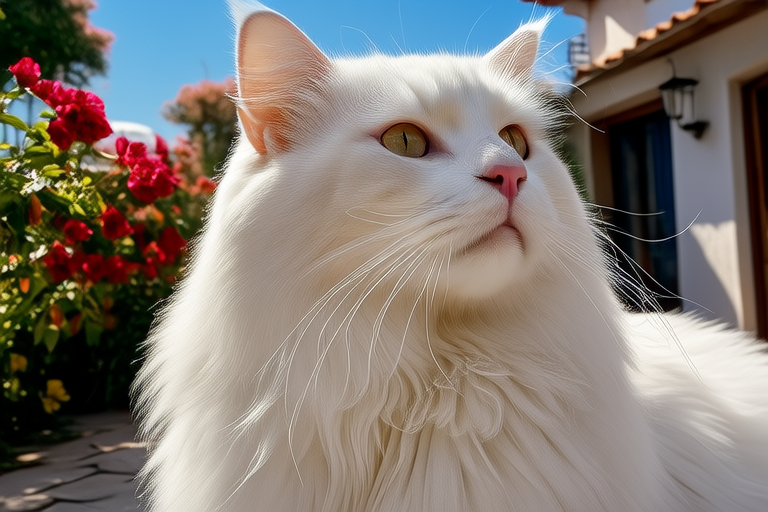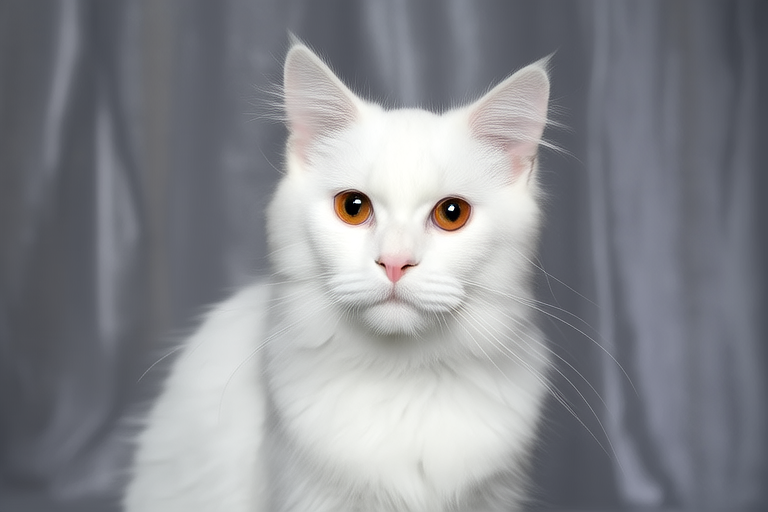
The History and Evolution of the Turkish Angora Cat
The Turkish Angora is one of the oldest cat breeds known to humanity, with a rich history dating back thousands of years. This elegant feline has captivated hearts for centuries, from its royal origins as a palace pet in ancient times to its status as a beloved breed today. Its striking appearance, coupled with unique traits, has made it a favorite among cat enthusiasts worldwide.
Origins and Early History
The Turkish Angora’s origins can be traced back to the mountains of central Asia, where it was first domesticated. These early cats were highly valued for their beauty and hunting prowess. By the time of the Ottoman Empire, the Turkish Angora had become a cherished companion to the ruling elite. The sultans kept them in their palaces, where they were pampered and admired for their grace and elegance.
In the 16th century, during the reign of Sultan Suleiman the Magnificent, Turkish Angoras were considered so precious that they were given as gifts to visiting dignitaries. One such gift was presented to King Louis XIV of France, who was so impressed by the cat’s beauty that he had a portrait painted of it. This painting, now housed in the Louvre Museum, is one of the earliest depictions of the Turkish Angora.
The Turkish Angora in Modern Times
Despite its ancient roots, the Turkish Angora remained relatively unknown outside of Turkey until the 20th century. In 1963, the Ankara Zoo in Turkey began a breeding program aimed at preserving the breed’s purity. This initiative led to the establishment of a closed colony of Turkish Angoras, which helped to ensure the breed’s survival and popularity. The zoo’s efforts were recognized internationally, and soon after, Turkish Angoras began to appear in cat shows around the world.
Today, the Turkish Angora is a well-known and beloved breed, prized for its distinctive features and playful personality. The breed’s long, silky coat comes in a wide variety of colors, including white, black, red, blue, and tabby patterns. Their large, pointed ears and piercing green eyes add to their exotic appearance, making them instantly recognizable.
Key Characteristics and Popularity
The Turkish Angora’s striking appearance is just one reason for its enduring popularity. Another is its playful and affectionate nature. These cats are known for their high energy levels and love of interactive play, often engaging in games that involve chasing and pouncing. They are also highly intelligent and curious, always eager to explore their surroundings.
One of the most fascinating aspects of the Turkish Angora is its ability to produce a range of vocalizations, from soft purrs to loud meows. Some owners describe their cats as being almost human-like in their communication, responding to verbal cues and even learning to open doors. This intelligence and sociability make the Turkish Angora an ideal companion for those looking for an interactive and communicative pet.
Cultural Significance and Myths
The Turkish Angora holds a special place in Turkish culture, symbolizing elegance and refinement. In Turkish folklore, there are many stories and legends about these cats. One popular myth tells of a Turkish Angora that saved a village from a deadly plague by leading the villagers to a hidden spring of fresh water. Another story recounts how a Turkish Angora was able to predict the outcome of a battle, warning the villagers of an impending attack.
These myths highlight the deep respect and admiration Turks have for their national treasure. The breed is also featured in Turkish art and literature, often depicted as symbols of grace and beauty. In fact, the Turkish government has designated the Turkish Angora as a national treasure, and the Ankara Zoo continues to maintain a breeding program to preserve the breed’s purity.
Modern Care and Breeding Practices
Caring for a Turkish Angora requires attention to both physical and emotional needs. Their silky coats require regular grooming to prevent matting and tangling. Many owners find that daily brushing helps to keep their cats’ coats shiny and healthy. Additionally, Turkish Angoras benefit from a diet rich in protein and other essential nutrients, as they are active and energetic cats.
Breeding practices for the Turkish Angora have evolved significantly since the breed’s early days. Today, breeders focus on maintaining the breed’s distinctive features while ensuring genetic diversity. This involves careful selection of breeding pairs and monitoring for hereditary health issues. The goal is to produce healthy, vibrant cats that retain the breed’s classic look and personality.
The Role of Turkish Angoras in Contemporary Households
In contemporary households, the Turkish Angora plays a vital role as a loving and loyal companion. Their playful and affectionate nature makes them perfect for families with children or other pets. Many owners report that their Turkish Angoras are incredibly social and enjoy interacting with humans and animals alike.
One owner, Sarah, shared her experience: “My Turkish Angora, Luna, has brought so much joy to our family. She’s always up for a game of fetch and loves to snuggle with us on the couch. She’s also very protective of our home and often patrols the house, making sure everything is in order.” Sarah’s anecdote is typical of many Turkish Angora owners, who find their cats to be not only beautiful but also deeply affectionate and loyal companions.
Conclusion
The Turkish Angora’s journey from royal palace pet to beloved household companion is a testament to its enduring appeal. From its striking appearance to its unique traits, this breed continues to captivate hearts and minds. Whether in Turkey or around the world, the Turkish Angora remains a symbol of elegance and grace, cherished for its beauty and companionship.






